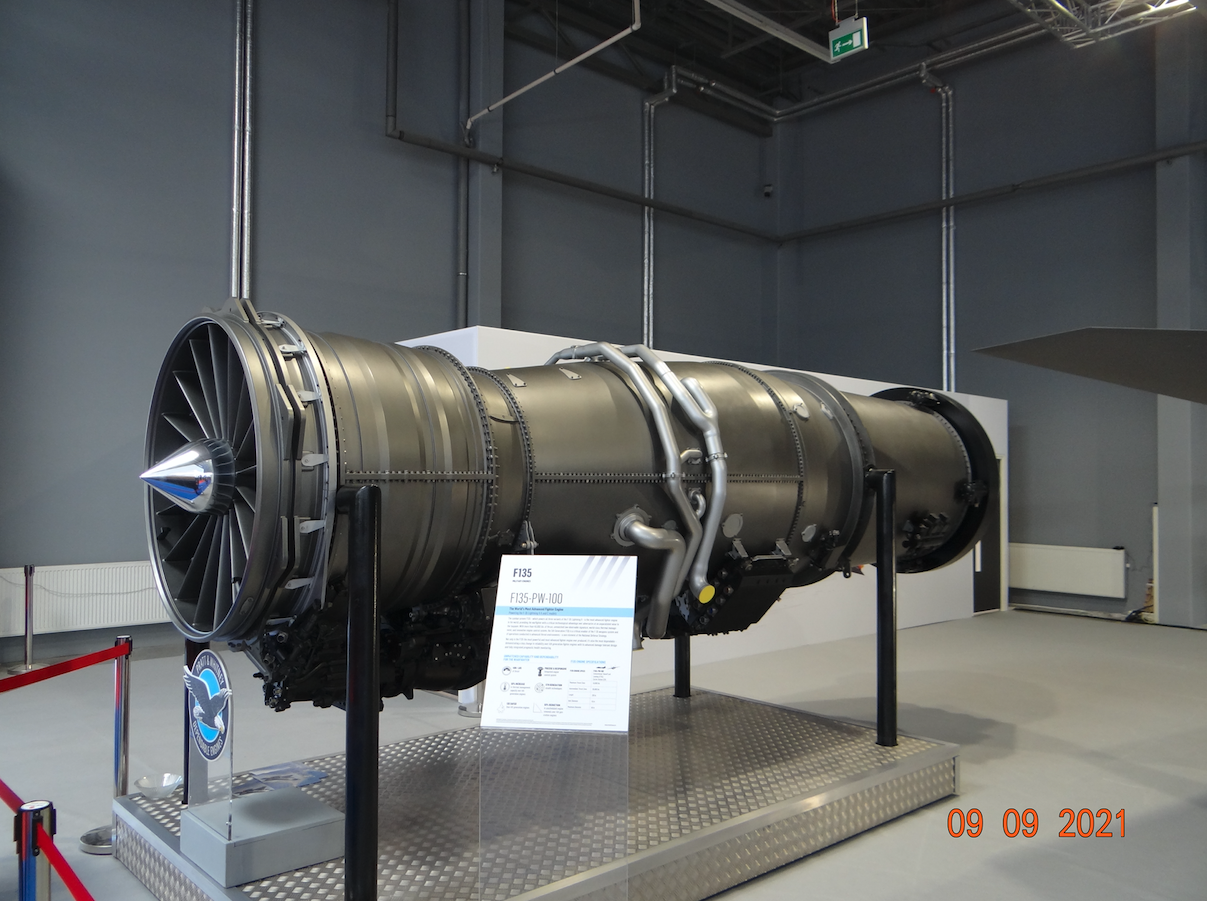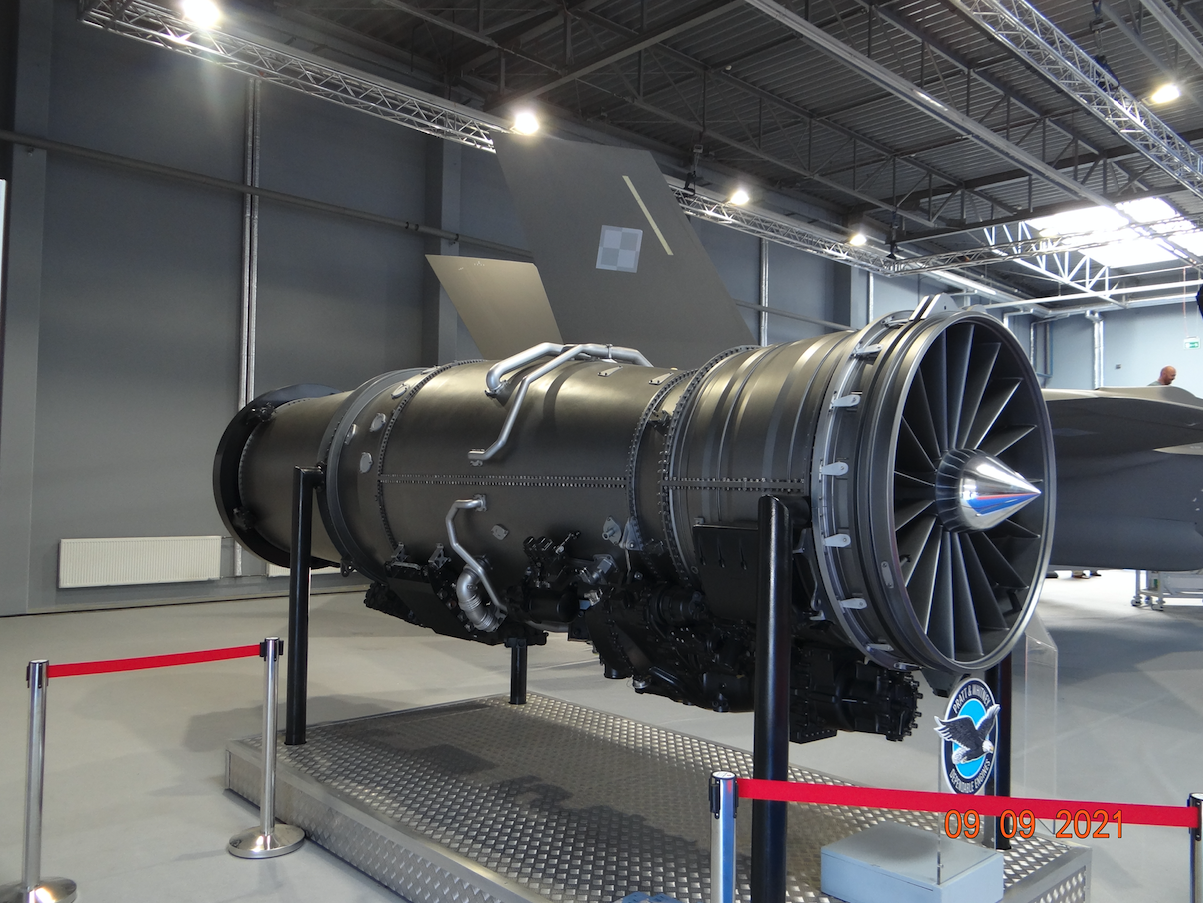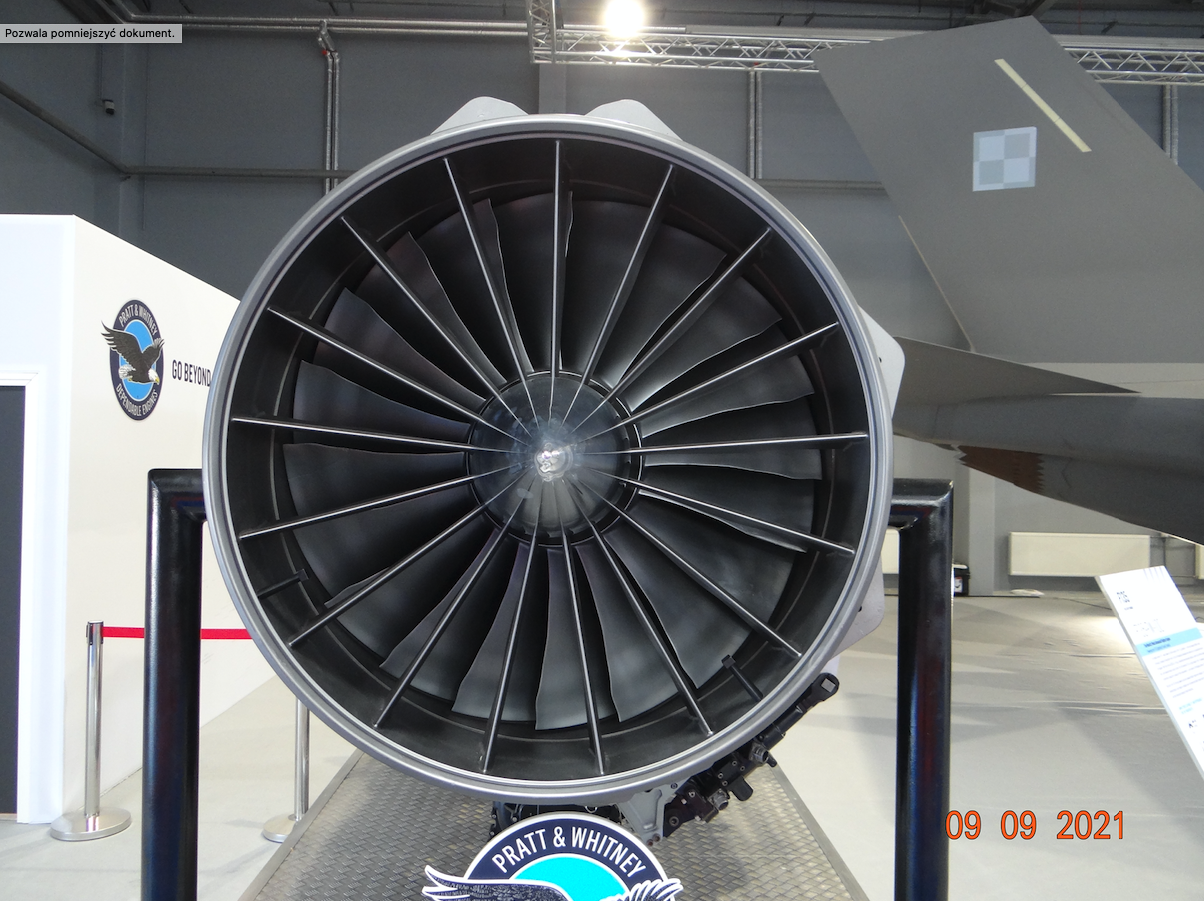Kraków 2022-09-21
Pratt & Whitney F135.
The Pratt & Whitney F135 engine is an afterburning turbo fan developed for the Lockheed Martin F-35 Lightning II, a single engine attack fighter.
The engine is available in two variants; A variant of the conventional take-off and landing (CTOL) used in the F-35 A and F-35 C and the two-cycle vertical short take-off and landing (STOVL) variant used in the F-35 B. This long variant has an additional fan from the front to the vertical. draft (lifting fan) and a movable outlet nozzle for horizontal and lifting draft.
The basis for the F135 engine was the Pratt & Whitney F119 engine, which is used in the F-22 Raptor aircraft. The F135 engine competed with the General Electric / Rolls-Royce F136 engine. The F135 engine was developed by Lockheed Corporation Skunk Works, which sought to develop the hard-to-detect STOVL strike fighter for the U.S. Marine Corps under the 1986 DARPA program. The lifting fan was created using a first stage fan from the F119 engine. The remaining elements were used from the F100 engine. It was about checking the validity of the concept. A guided exhaust nozzle has been added to the end of the engine. During the tests, the assumptions were confirmed. Individual engine modules were modified to increase thrust, both in classic operation and in the lifting system.
Rolls-Royce and Hamilton Sundstrand joined the program after the selection of the F135 engine. Rolls-Royce was responsible for the vertical lift system for the STOVL aircraft. Hamilton Sundstrand was responsible for the electronic engine control system.
The first Pratt & Whitney F135 production engines were delivered in 2009. Since 2009, a more durable variant of the F135 engine has been developed. However, difficulties arose because the temperatures in the engine ahead of the turbine were higher than assumed, and this did not help to extend the service life of the rotor blades. It was decided to use newer technologies, but this increased the costs of the program, engine and the aircraft itself. During further tests, it turned out that there were cracks in the turbine blades. They had to be redesigned and this increased their weight. In July 2014, the fan failed. Its blades broke off and the fuel tanks were punctured. The reason was that the blades were too long and rubbed against the internal stator, initiating an impending failure. The emerging problems were solved systematically. In 2015, due to the detection of further microcracks, Lockheed Martin F-35 flights had to be suspended once again.
The lifting for the STOVL hover version is achieved by a two-stage lifting fan located in front of the engine and a movable discharge nozzle. The low pressure turbine drives the elevator fan by extending the shaft in front of the low pressure impeller and the clutch. The engine booster is not used when lifting vertically. In conventional flight, the afterburner increases engine thrust by 52%, but at the cost of a significant increase in fuel consumption. The plane in a conventional flight, without the use of an afterburner, has a maximum speed of 1.2 Ma, and with an afterburner of 1.6 Ma. The engine exhaust nozzle and adjustable nozzle tabs are coated with ceramic radar absorbing materials (RAM). There are 15 flaps.
The engine is equipped with a real-time monitoring system. In the service center, the engine condition is assessed as it is without the intervention of a remote control. In 2017, Pratt and Whitney announced that the current version of the engine meets the criteria set for it. The company also announced that it had started developing modified versions of Block 1 and Block 2.
The classic F135-PW-100 engines will be used in the Polish F-35 A aircraft.
Data T-T F135-PW-100:
The engine has two shafts, axial flow, two flows. Length 220 inches (559 cm). 46 in. (117 cm) max diameter, 43 in. (109 cm) in diameter at fan inlet. Dry weight 3,750 lb (1,701 kg). Bypass ratio 0.57: 1. Thrust without afterburning 28,000 lbf (128 kN). Afterburner thrust of 43,000 lbf (191 kN). Total pressure ratio 28: 1.
The engine consists of a 3-stage fan, 6-stage high-pressure compressor, annular combustion chamber, 1-stage high-pressure turbine, 2-stage low-pressure turbine.
Written by Karol Placha Hetman



